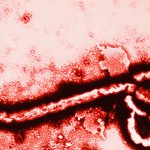 This course gives an overview of the concept of Dual Use Research of Concern and problems arising from DURC life science research. Course content includes guidelines for overseeing DURC research; the necessity of developing proper communication protocols; and developing a code of conduct for anyone involved with DURC.
This course gives an overview of the concept of Dual Use Research of Concern and problems arising from DURC life science research. Course content includes guidelines for overseeing DURC research; the necessity of developing proper communication protocols; and developing a code of conduct for anyone involved with DURC.
Course Learning Objectives
• The concept and problems that arise when certain life science research is considered
“dual use”.
• Guidelines when administering or maintaining oversight on dual use research.
• The necessity of developing proper communication protocols before, during, and after conducting research designated as DURC.
• Establishing the necessary committees and leadership groups to develop strict codes of conduct for all involved with DURC.
Chapter 1
A. Defining Dual Use Research of Concern and understand the importance of managing this research.
B. The concept and problems that arise when certain life science research is considered Dual Use Research of Concern.
C. The importance of taking precautions when conducting Dual Use Research of Concern.
D. The seven Categories of Experiments and the list of Especially Dangerous Pathogens to research examples to determine whether or not they may be Dual Use Research of Concern.
E. Research areas which are most likely to present DURC.
F. The Dual Use “dilemma”.
Chapter 2
A. Training researchers and support personnel on Dual Use Research.
B. Evaluating life sciences research for its dual use potential.
C. Designing Institutional Reviews.
D. Developing communication plans.
Chapter 3
A. The importance of open communication in dealing with DURC.
B. The two target audiences and the communication protocols applicable to each.
C. The risks and the benefits of communicating research, and the steps to undertake prior to releasing DURC study results.
Chapter 4
A. Codes of Conduct.
B. The core responsibilities of a researcher.


